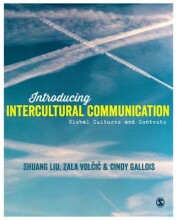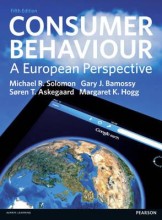Summary: Intercultural Communication: Global Cultures And Contexts | 9781446285916 | Shuang Liu, et al
- This + 400k other summaries
- A unique study and practice tool
- Never study anything twice again
- Get the grades you hope for
- 100% sure, 100% understanding
Read the summary and the most important questions on Intercultural Communication: Global Cultures and Contexts | 9781446285916 | Shuang Liu, Zala Volcic & Cindy Gallois
-
1 Challenges of living in a global society
-
1.2 Contributors to cultural diversity
-
What are the five contributors to cultural diversity?
- Advanced technologies
- Modern transport systems
- Global economy
- International business transactions
- Mass migration
-
What is the most significant contributors to our multicultural environment?
The ever-increasing flow of people through mass migration and international exchange. -
1.2.1 Advanced technology and transport system
This is a preview. There are 1 more flashcards available for chapter 1.2.1
Show more cards here -
How have advanced communication technologies influenced our lives?
- Communicate regardless of distance and time
- Relationships are affected. Even internet-based relationships.
-
1.2.2 Global economy and business transactions
-
What is meant by global transformation?
It refers to the worldwide economic and technological changes that influence how people relate to one another -
What is an example of global transformation?
You can buy an iPhone everywhere! -
What is one of the most biggest economic and social challenges facing us today?
Unlock the barriers of the acceptance of cultural diversity in the economy and society as whole. -
What are two consequences of the global economy and business transactions?
- Businesses are expanding into world markets.
- Ethnic diversity within workplaces is continually changing the organizational composition of most parts of the world.
- Flow of migrant workers (as a results of economic transformation) leads to an increase in ethnic competition.
-
What challenge do we face in the business context of intercultural communication?
Understanding the cultural tensions: conflicts in expectations, lack of communication competence and attitude problems such as mistrust. -
1.2.3 Mass migration and international exchange
-
What is the benefit of migration?
It contributes to the social and economic development in the country of origin and destination. -
What is the link between education and migration?
A steadily increasing proportion of migrant populations are made up of international students.
- Higher grades + faster learning
- Never study anything twice
- 100% sure, 100% understanding
Topics related to Summary: Intercultural Communication: Global Cultures And Contexts
-
Challenges of living in a global society - Necessity and benefits of intercultural communication
-
Definitions and components of culture - Components of culture - The inner core of culture
-
Definitions and components of culture - Components of culture - The intermediate layer of culture
-
The influence of culture on perception - Stages of the perception process
-
The influence of culture on perception - Perception and intercultural communication
-
Cultural and value orientations - Hofstede's cultural dimensions
-
Cultural and value orientations - Hall's High- and low-context cultural dimension
-
Cultural and value orientations - Kluckhohn and strodtbeck's value orientations
-
Cultural and value orientations - Intercultural communication ethics
-
Verbal communication and culture - The components and characteristics of verbal codes
-
Verbal communication and culture - Language, culture and discourse - Noam Chomsky's universal grammar

































